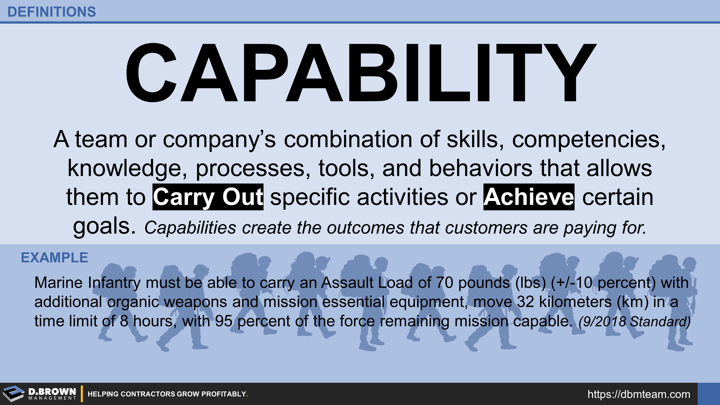EXAMPLE
Marine Infantry must be able to carry an Assault Load of 70 pounds (lbs) (+/-10 percent) with additional organic weapons and mission essential equipment, move 32 kilometers (km) in a time limit of 8 hours, with 95 percent of the force remaining mission capable. (9/2018 Standard)
What capabilities are required to win is the fourth of the five interlinked questions that define your strategy. This drives strategic decisions through all levels of operations and organizational development. These capabilities are broken down into specific standards, training, certifications (internal and external), and ongoing development to support execution of your strategy. These must be integrated across your whole business model and throughout every job role.

